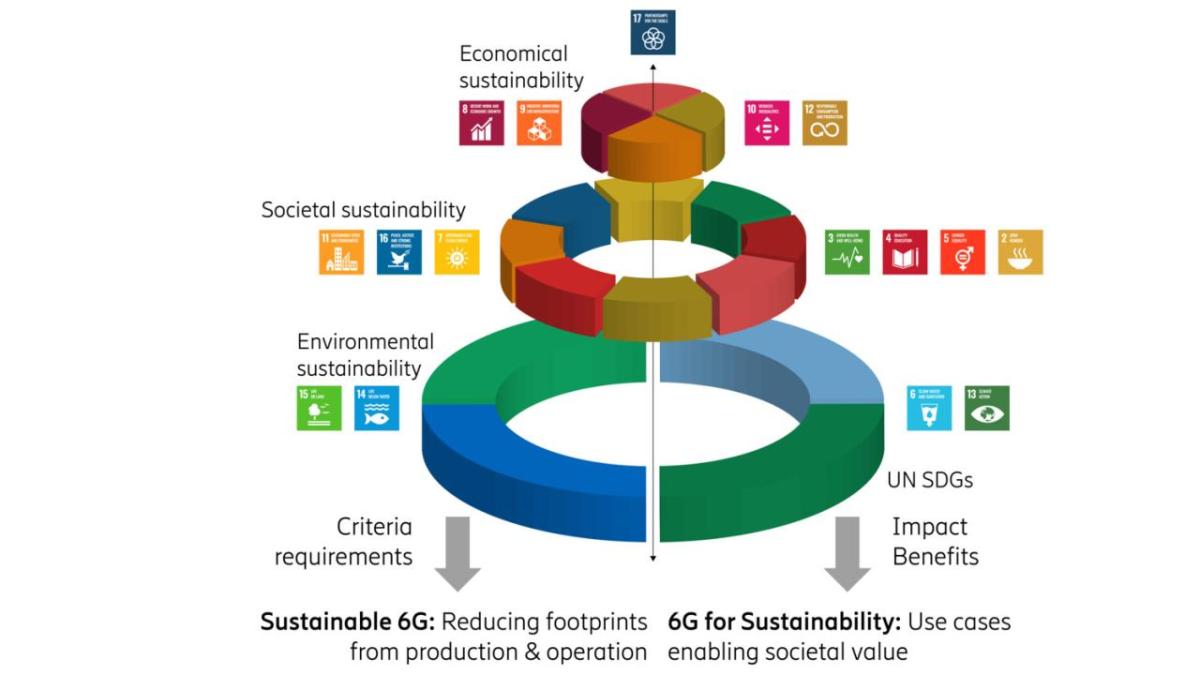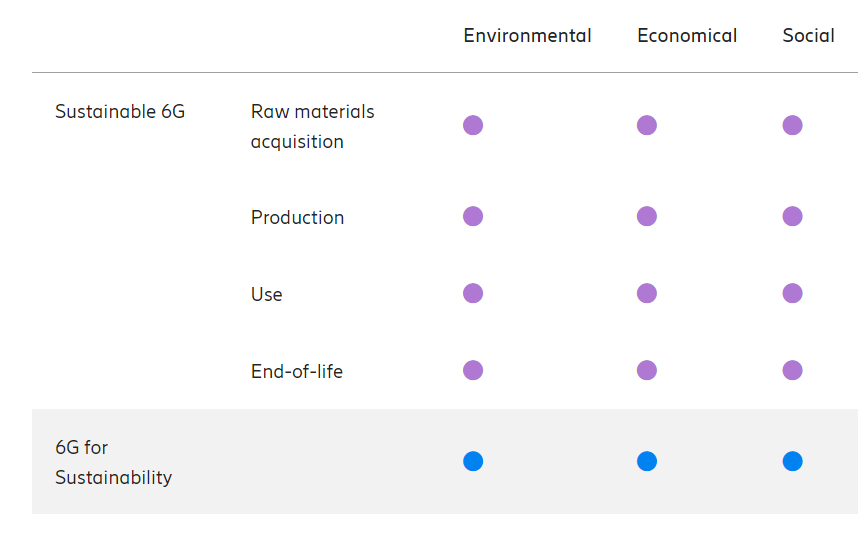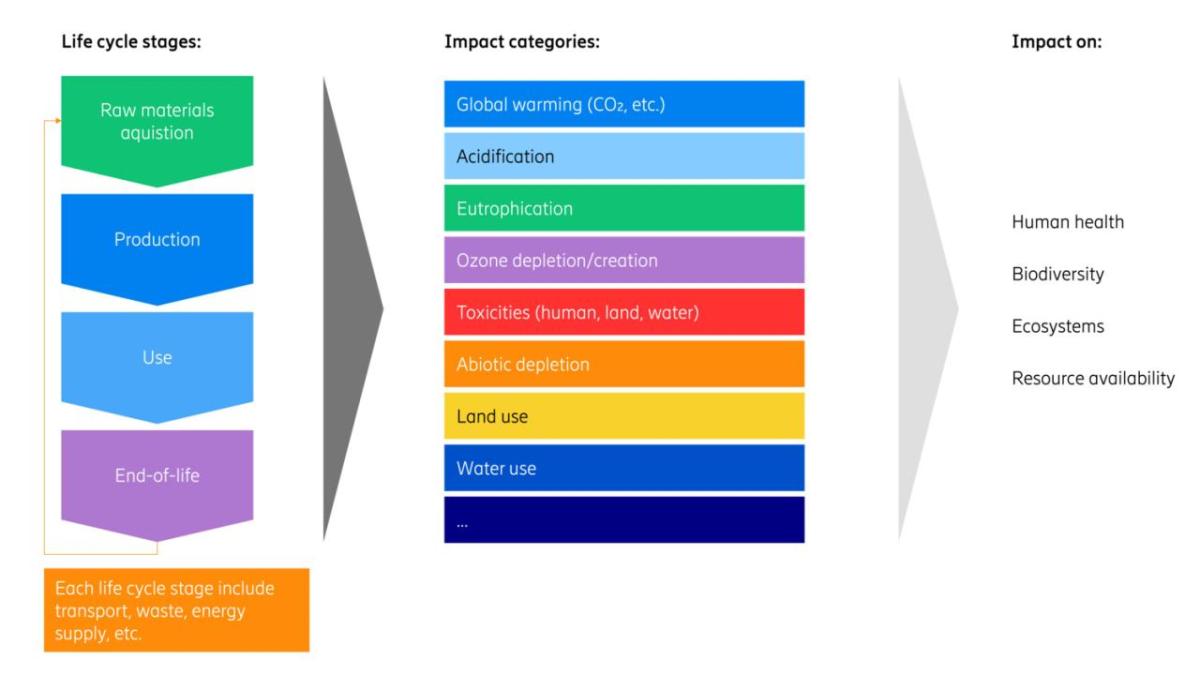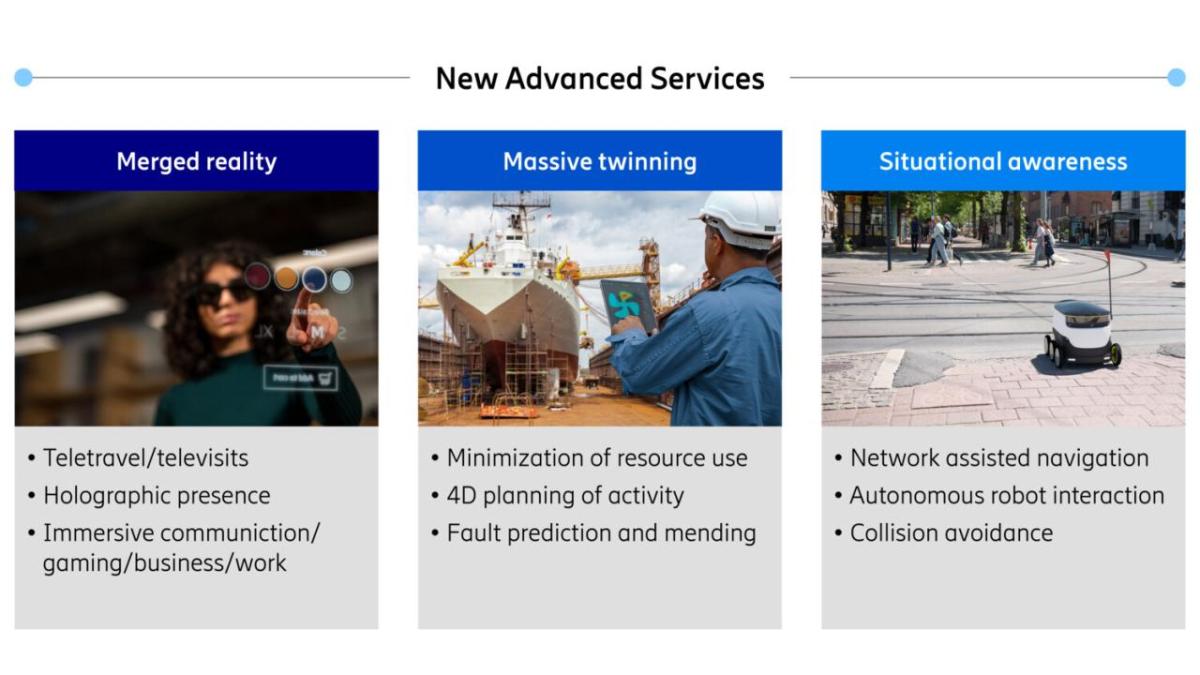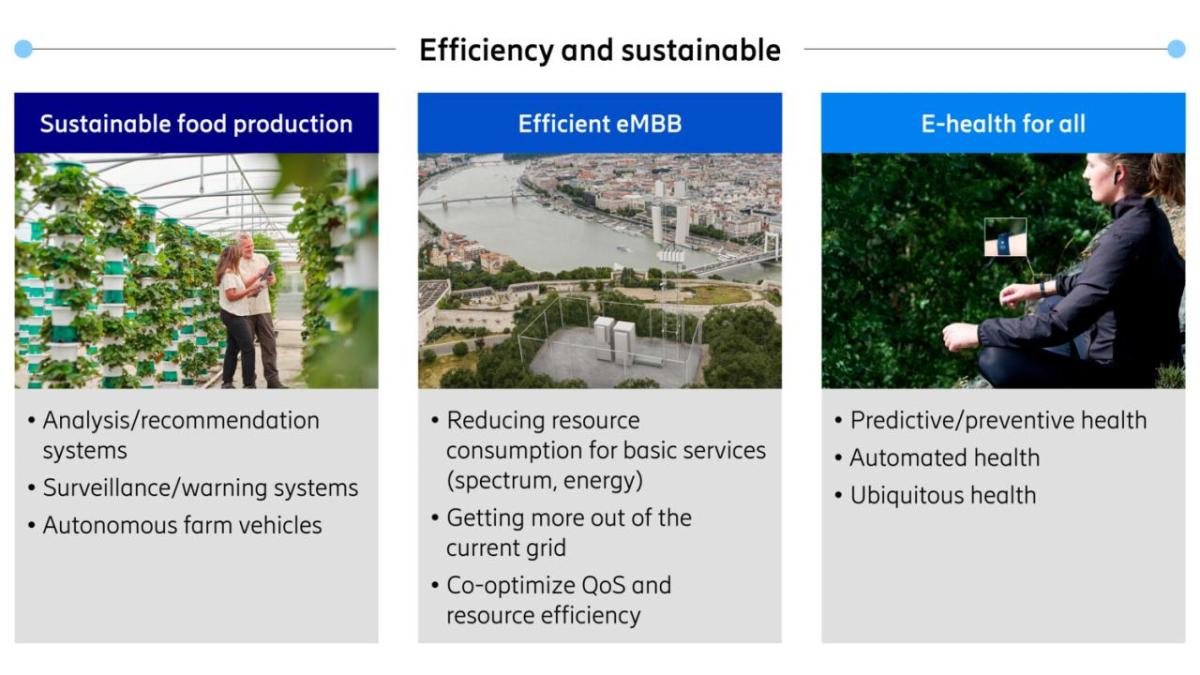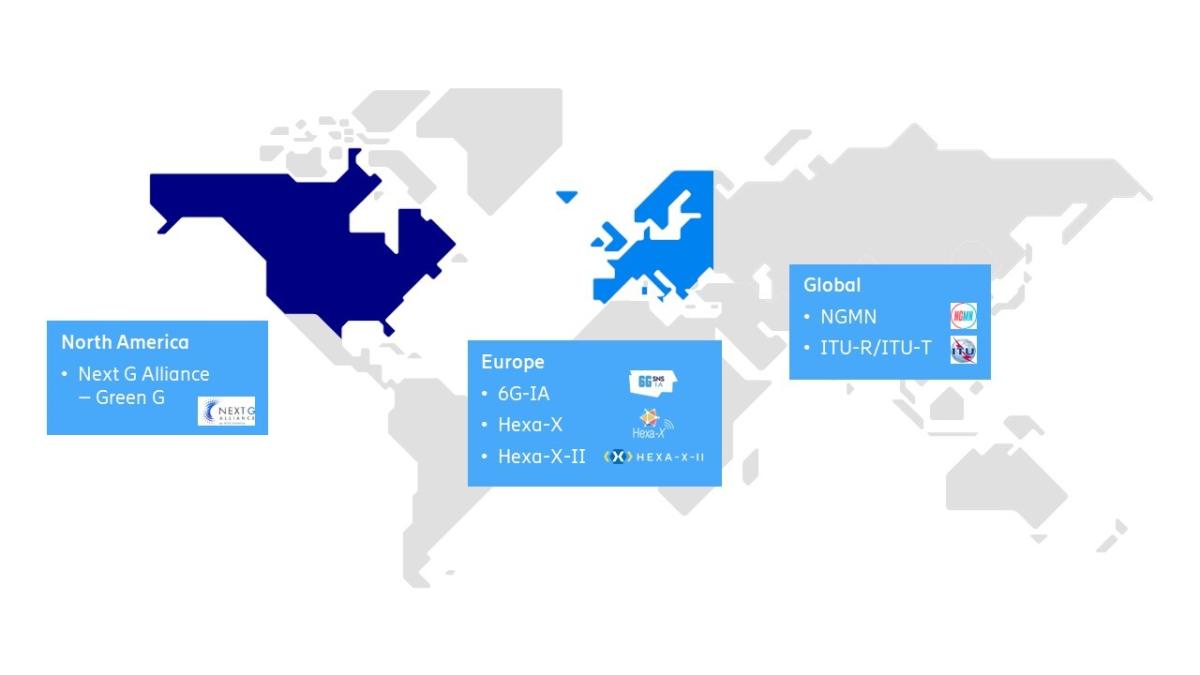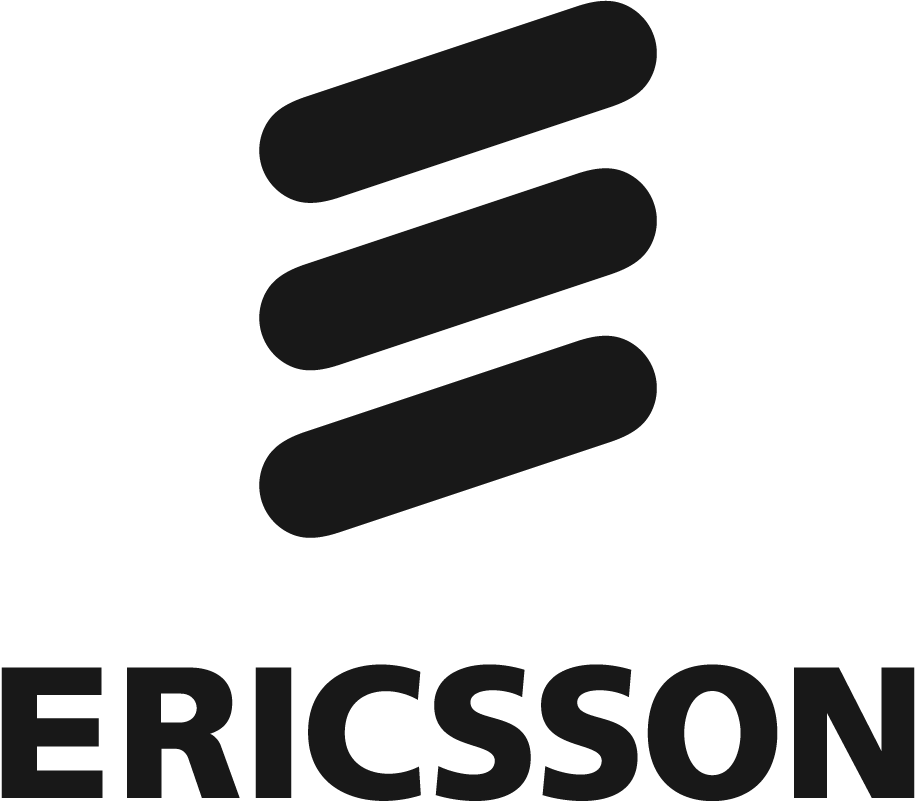Why Every Decision on 6G Must Put Sustainability First
Originally published by Ericsson
By Pernilla Bergmark Principal Researcher and Gustav Wikström Research leader, Networks
- We believe 6G shall be designed to make sustainable breakthroughs on all fronts: from improved network footprint to societal, economic and environmental benefits such as macro-economic gains, a narrower digital divide, and improvements to education, healthcare and other key sectors.
- Achieving that full promise will require putting sustainability at the center of 6G technology development, starting with the many global cross-sectoral initiatives that are taking place today.
At Ericsson we foresee many new use cases for future wireless networks, including advanced highly-demanding digital services such as immersive communication and massive digital twinning, but also use cases that can help us overcome the digital divide and enable reduced resource consumption.
We are already preparing for this today, and have laid down our vision for future wireless possibilities in our 6G white paper, as well as in other cross-sectoral initiatives such as Hexa-X. The UN’s ITU-R technological trends also present a good overall synopsis of the capabilities required to deliver this journey.
But technology doesn’t exist in a vacuum. It’s critical we consider how our technology impacts the development of society and how we can amplify the positive effects while mitigating any adverse effects already from first steps of technology design.
When moving towards 6G, our industry must recognize the great responsibility we have to help address societal challenges, and our focus should not only be to achieve excellent performance, but also a positive impact on sustainability.
What does sustainability mean to 6G?
Sustainability, or sustainable development, can be defined as “meeting the needs of the present without compromising the ability of future generations to meet their own needs.”
In 2009, the Stockholm Resilience Centre identified nine planetary boundaries which would allow the earth system’s processes to continue to regulate a stable planet where society can thrive, a framework that was updated and republished recently.
Instead of compromising on our future, from a technology development perspective, sustainability is to a high degree about respecting these boundaries and providing the conditions that support decent livelihood conditions. This equation is not a simple one and will lead to a compromise on different targets and costs, and above one that brings new considerations to technology development.
As a central part of future digital infrastructure, 6G networks will be closely linked to the sustainable development of society, across environmental, social and economic aspects in line with the UN’s Sustainable Development Goals (SDGs).
Sustainable development frameworks: What are they?
The most widely adopted framework for sustainable development is composed by the UN’s 17 Sustainable Development Goals (SDGs) that outline the actions needed to achieve long-term sustainability.
The 2030 Agenda for Sustainable Development and the UN SDGs aim to strengthen the social, economic, and environmental dimensions of sustainable development and bring a common understanding of what needs to be done by nations and businesses alike. Beyond these global objectives there are many regional and national targets, such as the European Green Deal, which sets a target for the EU to achieve climate neutrality by 2050.
At Ericsson, we are committed to supporting this development and have dedicated one of our technology journeys ‘connected sustainable world’ as a sustainable framing of technology development.
It is important to consider both sides of this journey: sustainable 6G (reducing 6G´s impacts across the entire life cycle) and 6G for sustainability (enabling use cases that create sustainable value).
Sustainable 6G
6G networks need to minimize any negative impact on sustainability. This objective means that the direct lifecycle impact from building and running networks should be minimized across environmental, social, and economic sustainability domains. Resource consumption is the focus here in terms of energy and material, but also any other impact from production processes and from using the systems and services. It must be clear that this is not just an ambition, but demands a real commitment to optimize networks for reduced negative impact beyond fulfilling regulatory requirements. Moreover, technology must be anchored in society to be socially sustainable, meaning that the use of resources is well motivated and explained.
6G for sustainability
6G networks should contribute to an overall sustainable development in society by enabling the transformation of other sectors than just ICT. This objective means that 6G networks should be designed to support existing or novel activities to enable a positive sustainability impact to produce benefits when scaled across society. Equally important would be to avoid any usage with adverse effects. Here it’s important to consider that there may even be a need to move away from certain use cases if they are identified to have a negative impact on society.
Sustainable 6G
From an environmental perspective, reducing the negative impact of the entire lifecycle of goods, networks and services is the primary responsibility of the 6G industry. Irrespective of use cases, it is vitally important that all aspects of producing, operating, and recycling the 6G system will have a minimal negative environmental impact.
The importance of sustainability during technology development
We believe that 6G needs to embed a wide set of values.
First, a 6G system need to be developed with as low an environmental footprint as possible. Already the technology design needs to consider how it will impact the physical implementation and the environmental impacts across the life cycle, including such as the use of materials, emissions during production and impacts from activities such as sales, distribution, and installation of the system.
Until now, network power consumption has typically been the main source of greenhouse gas emissions. As communication service providers (CSPs) switch to low-carbon electricity, we already start to see that the focus of environmental targets is moving more towards material use and pre-use lifecycle stages. For example, there is an increased focus on circularity, and that hardware should be both reusable and energy-optimized. Moreover, with an expected increase in IoT and sensor usage, circularity becomes increasingly important to avoid increasing e-waste streams. Already during the technology development phase of 6G, resource optimization must be a key design consideration, including architecture, split of functionality, modularity, processing distribution, the impact of performance requirements on material choices , and tailored and flexible signaling protocols to enable circularity and more.
Then there are other social and economic considerations that also need attention. For example, anyone operating a 6G system should be able to make sure that human rights are protected, that it is possible to claim liability and accountability, and that access to network services are affordable.
The earlier in the evolution of a new generation the above aspects are considered, the easier it will be to propagate for example resource-lean principles, privacy aspects and cost optimizations through the complete system.
One example area is architecture. When specifying a system architecture, modularization possibilities and distribution of functionality are already being fixed. If aspects relating to minimized energy and material consumption are not considered before that (at the stage of technology development) there is a risk that necessary functionalities are distributed in a way that makes this difficult to address this but incrementally later on.
A more specific example is broadcast information. When information is determined on broadcast, it may be possible to optimize this to minimize the broadcast instances and maybe even turn off broadcasting functionality and thereby save energy. This is possible if multi-purposed signals are avoided, for example.
For privacy aspects, security mechanisms also need to be considered from a very early technology design stage.
Energy consumption of 6G networks
To achieve the lowest possible energy consumption of 6G networks, we need to continue to improve the performance of our radio and baseband, but we also need to introduce new use cases that take energy consumption into consideration from the start. This includes optimizing the energy cost of transmissions for applications that will likely be more demanding than enhanced mobile broadband (eMBB ).
Beyond communication services, 6G is also likely to bring new network services that will be applied in various use cases together with connectivity. Distributed compute (supporting lightweight devices with processing) is one such example, as well as the provision of sensing and positioning information. These services will also consume energy and it is vital that the lowest possible energy profile is attached to such services.
From an energy performance perspective, it is important to turn to a zero (or a very low) energy consumption state whenever there are no processing demands on the hardware. AI-based energy saving improvements will largely depend on there being a high load dependence to energy cost, and this will only be achieved if low traffic states can also translate into low energy states on the hardware. To achieve this, aspects associated to the measuring and observation of the network will be important. However, such observability tasks will also come with an energy cost and this must also be part of the balance sheet of AI-driven optimizations, for example.
The network usage stage also includes considerations on how the network can interact with and adapt to the availability of (renewable) energy. Some deployments may be largely based on renewables that vary in availability, and as more industries become electrified there will likely be an increase in overall demand. From this perspective, functionality for adapting the network performance and consumption to availability will be key going forward. With the growing emergence of low-carbon electricity supply, the environmental impact of operating networks will decline. However, from a cost and affordability perspective, energy efficiency aspects will remain important.
Building a low-cost, inclusive 6G system
Economic sustainability is about the economic development of society itself linking sustainable development to areas such as job markets, productivity, infrastructure access and innovation. From this perspective, end-user cost is important to ensure inclusive and affordable systems. However, to contribute to economic sustainability, businesses also need to be economically sound and sustainable themselves. The value of 6G networks and subsequent use cases need to translate to a monetary value that can carry the provisioning ecosystem of end-users, vendors, CSPs, suppliers, system integrators and all other necessary stakeholders. Necessary investments need to be justified to support an increased use of current use cases and new services. Pricing equations need to consider the cost of deployments for very high performance, and the possibility to charge for quality of service need to be there, or the evolution of performance-demanding use cases may be at risk.
Making sure that 6G can carry its weight from the perspective of economic development, is both about the sustaining the business, as well as providing a net positive from a social and environmental and economic sustainability perspective. From the perspective of involved businesses, if the profitability is not there, it will not materialize. However, equally important, from a digital inclusion perspective, equally important is to consider the end user cost.
From the social perspective, methodologies to assess systems exist but have so far only been put to use to a limited extent. Compared to environmental or economic impacts, assessing social aspects across the lifecycle of systems is an area that has not been explored in as much depth and identifying potential impacts must be an important consideration of technology development moving forward.
Ethical AI, on the other hand, is perhaps the most well-studied area from a societal perspective. Many other perspectives such as working protection are traditionally rather considered to be addressable in a production and deployment stage. Social sustainability is closely linked to aspects of human rights where learnings from 5G would play an important role in understanding these aspects from a 6G perspective.
6G for sustainability
Developing a general-purpose technology, we also need to be mindful about both opportunities and potential adverse effects across the three sustainability pillars. 6G must address use cases that both promote and enable a more sustainable society.
6G should make it easier to be sustainable across many business sectors and societal functions, such as education, city management, manufacturing and logistics, and the re-circulation of products and materials.
As a key component of this, we believe that key 6G technologies such as more immersive communication and data-based optimizations e.g. massive digital twinning, could be designed to play a prominent role in creating that sustainable value. It may be that such use cases will not drive the extreme performance requirements, but through a desired high penetration and use, a new generation may become more sustainable than a previous one.
New services will complement the communication service and network-provided information such as sensing information will enable use cases that were previously not possible. A new network compute fabric which embeds processing within the network itself could allow for simpler and less power-hungry devices, enabling an even wider range of use cases.
During 6G development we will also assess how new use cases will open new value chains, with new stakeholders, new possibilities, new customers, and new partnerships that can be beneficial and profitable for all parties. For example, it’s expected that states and governments will be increasingly interested in certain use case areas to reach their sustainability goals, while schools, healthcare and other institutions or agencies may also show an increased interest. For these stakeholders, economic restrictions will be essential too, but sometimes also offer new opportunities.
6G from an economic perspective
Economic sustainability will be tightly coupled with development, evolution, and deployments of 6G services in two distinct ways.
Firstly, services built on 6G could drive productivity across societies, following the pattern of mobile broadband. This macro-economic aspect could provide associated benefits on infrastructure and job markets. However, the perspective of economic sustainability is broader and is linked also to the inclusion and distribution of welfare – another aspect that 6G use cases should consider.
Secondly, as for the 6G system itself, there is a business-value aspect of the use cases we work with and any use case must present a strong business case to enable scale and continued evolution. If the use cases cannot evolve, the enablement of all the potential positive impact of 6G networks may also be at risk, meaning that we ultimately fail to explore the sustainability potential of 6G fully.
The opportunities of immersive technologies
As VR and AR will continue to evolve, advances in device technology and applications, both for personal and professional use, will fuel the connectivity industry and provide opportunities to also offer other services associated to connectivity. One such example could be sensing information. The merge of the physical and digital world could offer new opportunities in education and for professionals. Today, the gaming industry is already increasingly exploring this physical-digital fusion that we call merged reality.
The opportunities of massive twinning
Massive twinning i.e. of IoT devices is another area where connectivity will be key. The concept of digital twins exists already today, for purposes of modeling objects, places or processes. However, during the 6G timeframe, with the expected breakthrough of trillions of zero-energy devices with low embedded processing capabilities to open new possibilities for massive twinning use cases.
Such twinning services will also depend on additional network services such as sensing and positioning data, compute and AI services. The twinning objects themselves can come from any industry segment or could even comprise entire cities and environmental ecosystems.
The opportunities of situational awareness technologies
The situational awareness area is an aggregate term for supporting moving objects, vehicles and devices. In the 2030-2040 timeframe, we expect there are many more drones, moving service robots, autonomous vehicles such as taxis or delivery trucks and all of these moving objects need to navigate, mitigate accidents and be aware of their surroundings and each other’s intent in a very general sense. For this, connectivity, sensing, positioning data and network processing, the latter in particular for simple vehicles, will certainly be needed. From an environmental perspective the sharing and use optimization of these will be important to keep down impacts.
The families above represent categories rather than being specific use cases or applications. It is also possible to envision combinations, e.g., an autonomously navigating exoskeleton, partly human-controlled, where the pilot experience the environment in an AR-enhanced-manner moving around in a physical/digital map created by massive amounts of sensors. The potential of the possibilities can only be limited by our imagination.
6G sustainable use case families
While the above are technology-centric use case areas, in our 2030-2040 timeline, there is also emphasis on providing value from a sustainability perspective. First, sustainability impacts of the technology-centric use cases need to consider sustainability both from a benefit and any adverse effect perspective. Moreover, there will be several use case families used for the technology development that are organized by their potential value rather than from the perspective of their technology area.
We believe food production and health are two such important areas. Under these use case areas, it is possible to envision farming that reduce resource need as drones survey fields and also microsensors distributed over fields (bringing situational awareness to enable resource optimization) . Image recognition can also support farmers with AR-supported information in viewing surroundings (leveraging merged reality). While the applications comprise different technologies, from a value perspective they could all contribute to the same value by reducing the surplus use of resources.
A similar reasoning goes for e-health. While e-health is perhaps often discussed as being one of the drivers for global mobile broadband (e.g. through global access to video consultations with a physician) it can also enable more advanced examinations or monitoring.
Even though all of the above use cases and use case areas may indeed make benefit of new services from the 6G network or new capabilities or higher quality of service levels, it’s also important to remember that the regular eMBB services will continue to develop and more and more challenges, whether professional or personal, can be solved through applications using eMBB. Thus, making eMBB globally available, more resource efficient and keeping control of the cost of eMBB will also be key for 6G. This may not be a specific 6G use case of its own, but it is indeed a specific capability set required from 6G and we include it among the 6G use cases to emphasize this.
From the sustainability perspective, 6G development is unique in comparison with earlier generations of mobile telecommunication from the perspective of integrating sustainability considerations other than energy performance already in the pre-standardization phase. If managed well, this opens new opportunities to integrate sustainability in the technology design from the start, allowing for deeper optimization, while at a later stage only incremental enhancements may be realistic. Another perspective is the increased digital maturity which could allow more advanced sustainability-related services to scale. When improvements are identified for 6G, we should incorporate them also in 5G whenever possible.
Addressing the risks of general-purpose technology
Unfortunately, it is rare that technologies – even when developed with the best intentions – are only ever used for good purposes. When it comes to general-purpose technologies, enabling something good usually also mean enabling something bad.
Most technologies can be misused or have unforeseen negative effects. For this reason, when developing new features, services, and technologies for 6G, our industry must make sure that the all adverse effects and risks are identified and addressed.
Late security awakenings can be expensive and have devastating consequences. When technology capabilities increase, risk awareness, and risk mitigation need to increase with it. This is part of developing a responsible and sustainable 6G.
In particular, when introducing possibly paradigm-shifting technologies such as AI, both to optimize 6G performance and as a service, it is important to consider related risks and build a trustworthy AI solution from start. From another perspective, building awareness of risks and hurdles in other sectors of societies could also be expected to bring new opportunities for innovation where 6G-based services could help mitigate those and build a more resilient society.
Sustainability focus in ongoing projects
To make sustainability an integrated perspective in 6G technology development demands collaborative effort to embed the sustainability perspective into all different ongoing activities across the world, and to sustain and amplify efforts over time. For this reason, Ericsson has engaged in several of the main ongoing 6G activities.
Hexa-X and Hexa-X-II
Hexa-X and Hexa-X-II are two main EU research projects on 6G evolution. Hexa-X ends mid-2023 and has successfully been studying and included many of the sustainability aspects and integrated them as considerations when researching 6G technologies. Deliverables on values and use cases have been identified, for example D1.3 and D1.4. The notion of a ‘key value’ has been introduced and key value indicators, or KVI’s, are defined as an emerging concept and an approach towards monitoring sustainability values.
In Hexa-X-II, we would like to continue to study sustainability aspects in the three different categories, environmental, social and economic in the light of use cases and requirements. The project will run from 2023-2025 with first deliverables surfacing already during the summer 2023.
6G-IA
In the 6G Industry Association (6G-IA), the European ICT ecosystem comes together to define the R&D roadmap and impact the research projects funded within the Horizon Europe program. Here, Ericsson is leading a group looking at societal challenges and how they should be taken into account in 6G development. This work has led to the formulation of KVIs as a means to measure impact on societal values, and the view that value-driven development should complement performance-driven development. Read their white paper: What societal values will 6G address?
Next G Alliance
The mission of the Next G Alliance Green G working group (view their webinar: the path to sustainable 6G) is to position North America as the global leader in environmental sustainability by creating a sustainable 6G ecosystem and enabling other industries to reduce greenhouse gases and energy consumption, limit land and water use, and move towards a more circular economy. The Green G aims to aggregate information from across the ICT sector and beyond to educate our industry, other industries, and consumers. It also wants to enable other industries to become more sustainable through wireless technology.
After its launch in early 2021, the Green G Working Group issued its first white paper [Green G: The Path Toward Sustainable 6G] that examines the status of sustainability in ICT, identifies gaps, and proposes research initiatives. A second white paper was released in March 2023 [6G Sustainability KPI Assessment Introduction and Gap Analysis] that provides an overview of available KPIs for the ICT industry and their applicability to 6G ecosystem components.
NGMN
NGMN activities on 6G use case and requirements, and in particular the NGMN paper on requirements and design considerations list essential needs, digital inclusion, energy efficiency, addressing environmental impact and trustworthiness to name a few.
In NGMN, sustainability has been addressed separate from the 6G specific activities but creates a clear view of the NGMN sustainability focus, as reflected in the deliverables that have been published so far. Recent NGMN deliverables on sustainability covers such as telco supply chain sustainability of green future networks as well as KPIs and target values for green network assessment.
ITU
For the International Telecommunication Union (ITU), the UN body for telecommunication and ICT, the sustainability perspective is important and part of its strategic plans. ITU consists of three branches, ITU-R handling spectrum, ITU-D focused on development and ITU-T handles standardization.
Sustainability, beyond energy performance has not always been on top of the agenda for ITU-R in the past but for 6G this is changing: ITU-R recently released its technological trends report in which the first trend stated the following:
Networks will support enabling services that help to steer communities and countries towards reaching the United Nations’ Sustainable Development Goals (UN-SDGs)
The trend paper from ITU-R touches upon societal goals being drivers and where these goals include contribution to UN SDG goals. Sustainability is represented both as a key trend and a key driver. The ITU-R work on IMT-2030 now continues with a vision framework (to be released later in 2023) and next year with technical performance requirements. It is expected that various aspects of sustainability will be further addressed in these coming steps too, and we have seen many stakeholders who have a strong interest in this topic.
From a standardization perspective, ITU-T has been working on standards for how to assess the environmental impacts of ITU (sometimes in collaboration with ETSI and other organizations) for more than ten years. As such it provides the methodological foundation for assessing direct and indirect environmental effects of 6G. However, standards are not yet taking the perspective of assessing the impacts of future technologies which remains to be specified. From this perspective there is an opportunity for 6G to work closely with ITU to see how future technologies could be assessed, qualitatively or quantitatively.
In addition to the assessment standards, ITU-T has also developed the ICT sector’s Net Zero definition and its decarbonization trajectory which has been developed jointly with GSMA, GESI and SBTi, setting a climate ambition for any ICT technology to consider. You can learn more about what is required for ICT companies to become Net Zero from the ITU’s guidance and criteria for ICT organizations on setting Net Zero targets and strategies.
Milestones on the journey to 6G
The development of a new wireless technology generation consists of many steps and phases and is spread out over as much as a decade. During the development, several different perspectives and aspects will be highlighted and scrutinized by the involved parties at different stages. Challenging ambitions defined early on may need to be off-set against other benefits, and obviously the outlook differs depending on stakeholders.
From a sustainability perspective it is key not to lose sight of the long-term goals, and make sure to consider these goals in existing well-defined ways of working and processes. Being proactive in this area will be key since we know that business as usual will not ensure a sustainable development.
We can see the 6G development as divided into three phases; a research phase at lower TRL (1-3); a development phase of mid TRL (4-6), and a more mature deployment phase of high TRL (7-9). In these respective phases it is important to consider and achieve the following:
Research phase
- Establish a sustainability paradigm in the 6G industry, complementing the focus on technical requirements.
- Embed sustainability in the optimization of system performance.
- Develop use cases that give social and environmental benefits, consider risks and mitigate negative social and environmental effects. Steer 6G towards supporting use cases that address societal challenges.
- Create attention in key fora (ITU, 3GPP, etc.) on sustainability challenges.
- Make sure to include requirements and design criteria that reflect sustainability needs from an early stage, in all aspects of technology development.
- Formulation of KVIs to measure impact on sustainability values.
Milestones:
- Hexa-X final project deliverable (2023)
- ITU-R IMT-2030 Framework report (2023)
- Hexa-X-II project deliverables (2023-2025)
- ATIS NGA whitepapers (2023)
Development and standardization phase
- Engage in the standardization process, promoting sustainability values, mitigating or avoiding new components and features being introduced that would reduce benefits or present a negative impact on sustainability values.
- Monitor that targets and requirements related to sustainability challenges are maintained over time.
- Ensure a design that ensures that all sustainability impacts from manufacturing and deployment are well motivated and kept low.
- Performing assessments of KVIs.
Milestones:
- ITU-R IMT-2030 technical performance and requirements report (2026)
- 3GPP SA1 6G Requirements SI (2024-2025) – describing use cases, needs [Stage 1: service requirements]
- 3GPP RAN Requirements (2024-2025)
- 3GPP RAN 6G SI (~2025) WI (~2026) [Stage 2: technical realization and architecture definition, Stage 3: detailed specifications]
Deployment and market introduction phase
- Optimize products for sustainability within the boundaries and opportunities of the standard.
- Support the market introduction such that the usage of 6G reaches the parts of society where we expect the highest benefits.
- Actively promote the realization of the 6G ecosystem with relevant stakeholders to enable new services.
- Actively counteract and suppress any negative impacts.
- Evaluation of KVIs in the deployed system to measure impact.
Milestones:
- Market introduction (~2030)
- Gradual introduction of novel use cases (~2030)
- 6G evolution standardization
Our collective journey has begun
In the coming 6G development, there are many occasions when the industry should and can take actions in a sustainable direction. It is important to see the possibilities and responsibilities at every stage of the development, and to integrate the sustainable development perspective into the technical work of technology development.
These considerations should not be a separate thing but should be present in the process when we design, build, and run 6G networks. To really make a change, we need to involve all relevant stakeholders and make them see their role in sustainable development and what they can impact.
Acknowledgements
The authors want to thank Christofer Lindheimer, a former colleague at Ericsson, for substantial input to this article.
Related reading
Follow the journey to 6G with Ericsson Research
Read our 6G white paper
Learn more about journey to a connected and sustainable world
Imagine Possible Perspectives: Explore the limitless possibilities of zero-energy devices
Blog post: Here are nine important takeaways from early 6G research
Blog post: Unpacking the multifaceted climate impact of ICT – rebound and other effects

